An In-Depth Explanation of the 2017 Ford GT's Five Drive Modes

In our time with a nearly-production-ready Ford GT prototype, we got to learn about how Ford designed a chassis and aerodynamic package that can morph to the driver's needs with the twist of a steering wheel-mounted dial. Here's an in-depth explanation of exactly what will happen when the lucky GT owner cycles through all five modes.
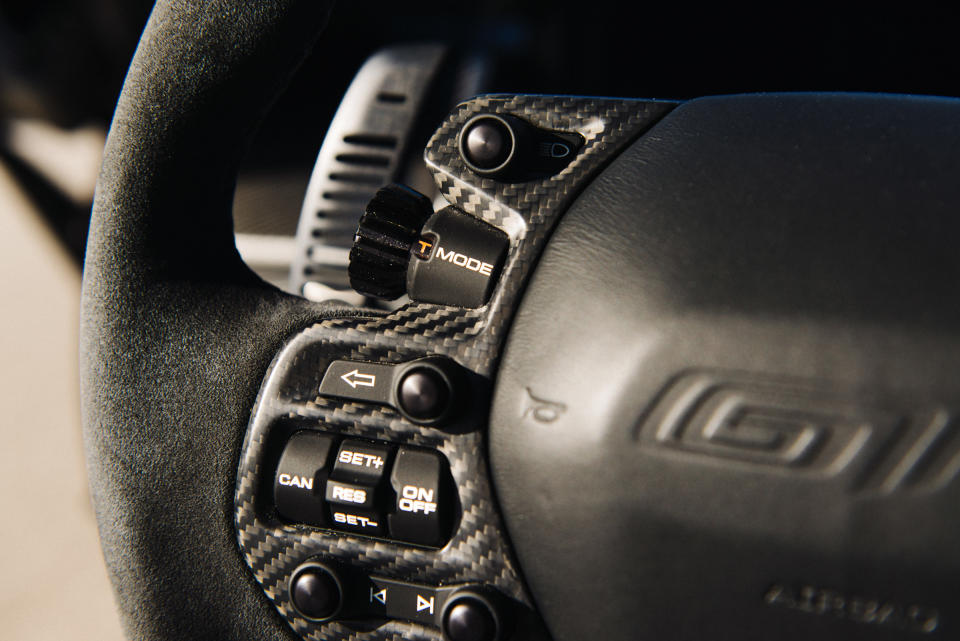
Let's start with the least-aggressive setting, Wet. Here, the suspension is in its softest setting, Normal, with 120mm of ground clearance and the option to hit the Comfort button for even softer damping on rough roads. Throttle response is softer to prevent unintentional wheelspin; ABS and traction control are at their most sensitive.
Next up is Normal mode. Suspension, ride height and aerodynamics are unchanged from Wet mode, but throttle response, stability/traction control, and transmission shifting strategies are at their default.

One click further calls up Sport mode. The ride height stays the same, but the dampers go one click firmer. In this mode, the GT's anti-lag feature kicks in, managing throttle opening and fuel delivery to keep the turbos spooling, eliminating lag even at low RPM. The seven-speed dual-clutch transmission moves to a more aggressive shift strategy, using g sensors and yaw detection to anticipate spirited cornering and call up the right gear for maximum throttle response. ABS, traction and stability controls loosen their grip a bit more.
[contentlinks align="left" textonly="false" numbered="false" headline="More%20Ford%20GT?%20More%20Ford%20GT." customtitles="First%20Ride:%20The%20All-New%20Ford%20GT%7CHow%20the%20Ford%20GT's%20Crazy%20Innovative%20Suspension%20Work%7CAll-New%20Ford%20GT:%20Exclusive%20Images" customimages="||" content="article.31818|article.31821|gallery.6882"]
Up until this point, the car's aerodynamic features have stayed stowed. With the rear wing in its lowered position, there's less rear-axle downforce. To balance this, shutters in the nose of the car open up, allowing air coming in from the front to bypass the downforce channels via a low-pressure shunt pathway.
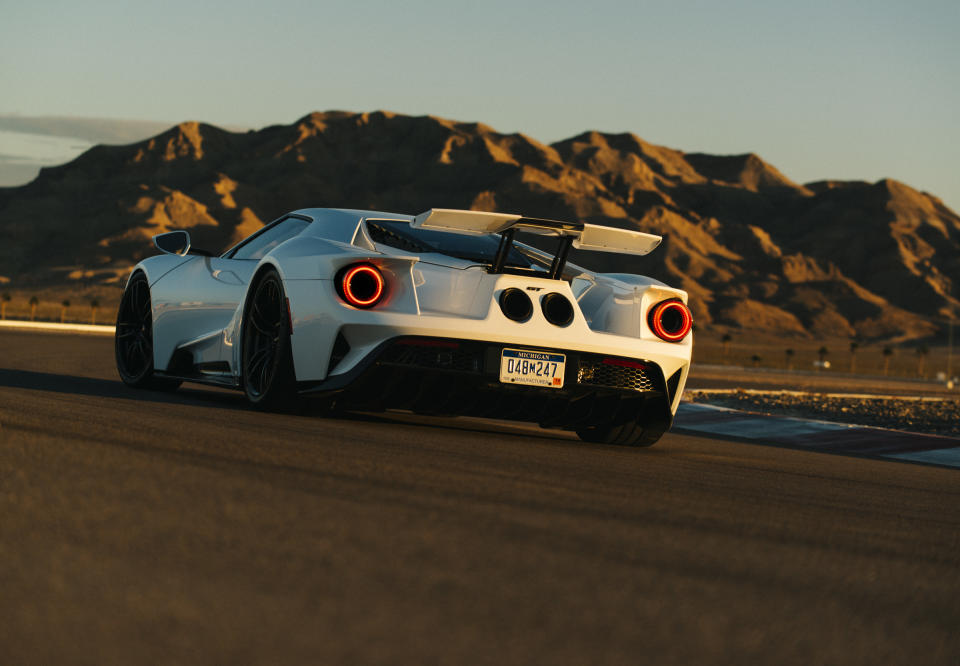
When the driver clicks into Track mode, the full aero suite is activated as the suspension drops the ride height by 50mm. The aero shutters in the nose flip closed, diverting all the air entering the front of the car into the high-pressure downforce channels running through the chassis. This massive front downforce is balanced by the rear wing, which rises up hydraulically.
Other changes are going on with that rear wing. While the top surface of the wing is flat when stowed, a small Gurney flap raises up vertically at the trailing edge of the wing as it elevates. You can see the small flaps on either side of the center brake light. In addition, a cam system inside the wing actually changes the shape of the wing's underside, optimizing airflow to generate even more downforce. In Track mode, the wing also doubles as an air brake, flipping forward to add drag under heavy braking.

Vmax mode calls up the lowered ride height and firmer spring and damper settings of Track mode, but leaves all the aero devices in their lowest drag settings-the front air shutters open up to divert airflow away from the downforce channels, and the rear wing stays in its lowered position. Raj Nair, director of product development and chief technical officer at Ford, wouldn't directly say what kind of top speed the GT is capable of in Vmax mode, only admitting that it's "above 200mph."
It's worth noting how quickly these aero changes occur. Both the adjustable suspension and the rear wing actuator are powered by the GT's old-school hydraulic power steering system. As such, everything moves with an urgency you don't see in air- or electric-operated systems. Here's an actual-speed demonstration in GIF form:
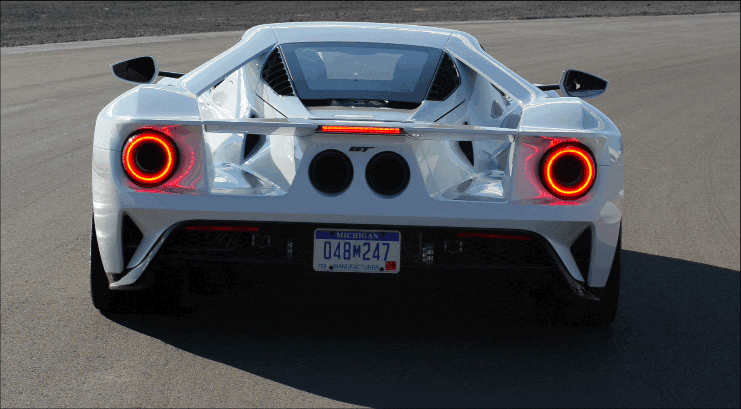
And another, showing how the Gurney flap extends at the rear of the wing as it elevates when switching into Track mode:
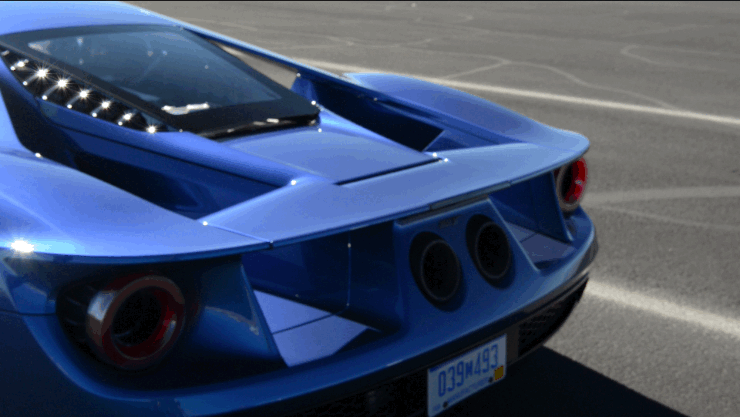
And fear not, showoffs: The rear wing will still raise up even if you haven't dropped the car down into its super-low Track suspension setting. In Normal mode, the wing goes up at 90mph, down at 81; in Sport mode, the wing goes up at 71, down at 45. Even better, you can raise the rear wing to its full plumage when parked. But be warned: it'll retract as soon as you drive off-unless you're in Track mode, which you shouldn't be unless you're at the track.
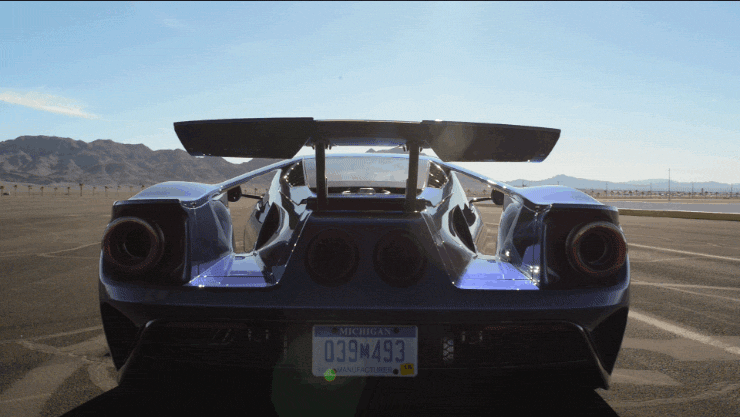
You Might Also Like

 Yahoo Autos
Yahoo Autos 